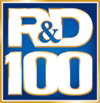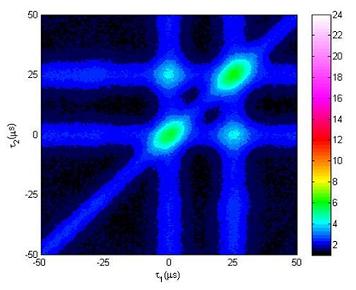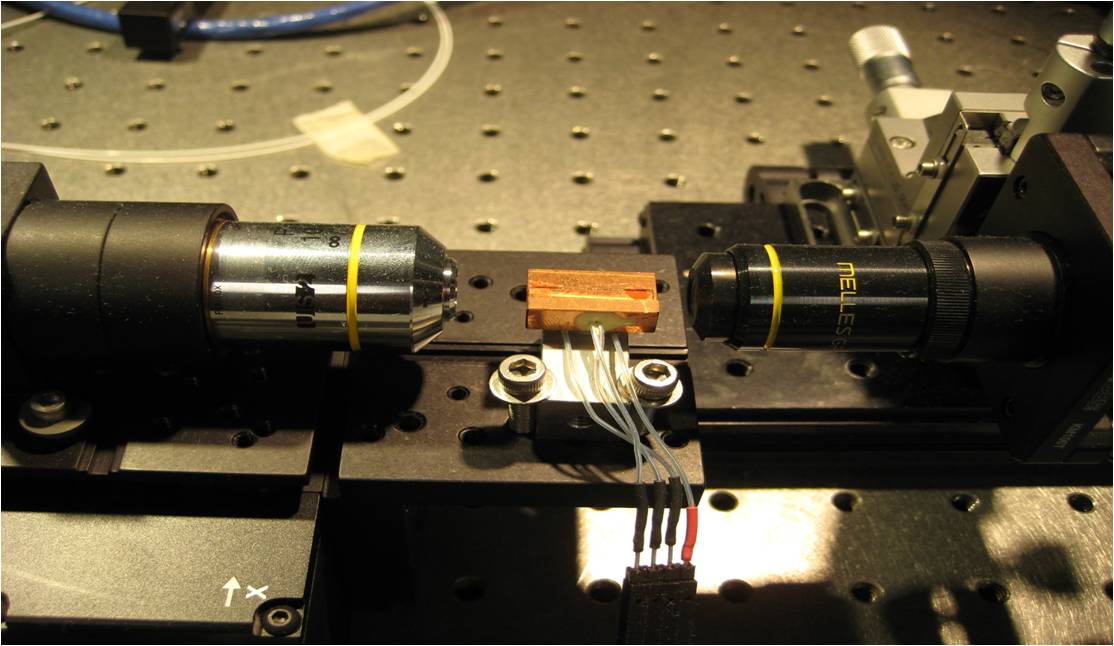|
Project Mission To conduct quantum information related research to:
Home Publications Links Collaborations Team Developments Opportunities
Most Recent Publications L. Ma, O. Slattery, and X. Tang, "Detection and Spectral measurement of single photons in communication bands using up-conversion technology", Laser Physics, 2010. Li Yan, Lijun Ma, and Xiao Tang, "Bragg-grating-enhanced narrowband spontaneous parametric down-conversion", Optics Express, 2010. Matthew T. Rakher, Lijun Ma, Oliver Slattery, Xiao Tang, Kartik Srinivasan, "Quantum Transduction of Telecommunications-band Single Photons from a Quantum Dot by Frequency Upconversion", Nature Photonics, 2010. Lijun Ma, Oliver Slattery and Xiao Tang, "Study on noise reduction in up-conversion single photon detectors", Invited paper, Proc. of SPIE, 2010. |
Quantum Communications Quantum information science combines two of the great scientific and technological revolutions of the 20th century, quantum mechanics and information theory. According to the National Science and Technology Council's 2008 report "A Federal Vision for Quantum Information Science", quantum information science will enable a range of exciting new possibilities including: greatly improved sensors with potential impact for mineral exploration , improved medical imaging and a revolutionary new computational paradigm that will likely lead to the creation of computation device capable of efficiently solving problems that cannot be solved on a classical computer. One of the fundamentally important research areas involved in quantum information science is quantum communications, which deals with the exchange of information encoded in quantum states of matter or quantum bits (known as qubits) between both nearby and distant quantum systems. Our Quantum Communication project performs core research on the creation, transmission, processing and measurement of optical qubits – the quantum states of photons, with particular attention to application to future information technologies.
In the past few years, we have undertaken an intensive study of quantum key distribution (QKD) systems for secure communications. Specifically, we demonstrated high-speed QKD systems that generate secure keys for encryption and decryption of information using a one-time pad cipher, and extended them into a 3-node quantum communications network. We have demonstrated the strengths and observed the limitations of QKD systems and networks. One such limitation is the effective communication distance of a point-to-point QKD system, which is about 100 km. Quantum repeaters represent a promising solution to this distance limitation. It enables quantum information exchange between two distant quantum systems including quantum computers. Though quantum repeaters are conceptually feasible, there are tremendous challenges to their development. Our goal in this area is to identify the problems, find potential solutions and evaluate their capabilities and limitations for future quantum communication applications. In summary, we perform research and development (R&D) in quantum communication and related measurement areas with an emphasis on applications in information technology. Our R&D is aimed to promote US innovation, industrial competitiveness and enhance the nation's security. This website shows the footprint of our R&D efforts in the past few years. For more information concerning this program, please contact project leader Dr. Xiao Tang (xiao.tang@nist.gov). Keywords: quantum communication, quantum measurement science, entangled photons, quantum teleportation and repeaters, free space optics, quantum cryptography, photon source/detectors. |
Higher Order Temporal Correlations Measured using Up-Conversion Detector The NIST quantum communications group has demonstrated an approach to measure the higher order (second-, third- and fourth) temporal correlations of photons in the near infrared (NIR) region using up-conversion detectors. The NIR photons are up-converted to the visible region and their temporal correlations are then measured using silicon photodiodes. The experimental results reveal that the photon statistics are well preserved in the frequency up-conversion process. Read more here.
System data rate breaks the jitter limitation with NIST up-conversion detectors: NISTs Quantum Communications research group has demonstrated a method to increase the date rate of quantum communication systems equipped with up-conversion detectors. The demonstration is implemented by using a novel multi-wavelength pumping scheme. Read more here. NIST Up-Conversion Detector Achieves Ultra Low Noise Level: The ITL Quantum Communications research group recently published details showing significant performance improvements in frequency up-conversion technology. The group demonstrated an improved frequency up-conversion detector with ultra low dark count (i.e. noise). The dark count rate of this detector is lower than 100 counts/second at 10% detection efficiency. Read more here.
Nature Photonics reports on ITL collaboration with CNST: Converting single photon emission from one wavelength to another is an important resource for integrating future quantum systems that combine low-loss optical transmission in the near-infrared with long-lived memories in the near-visible. As described in an upcoming issue of Nature Photonics, a collaborative research effort from CNST and ITL has demonstrated frequency upconversion of single photons from a semiconductor quantum dot from the near-infrared to the near-visible. Read more here.
|






 Entangled Photon Pair Sources: Entangled photon pairs are important for the realization of quantum communication and quantum computation. Our basic objective is to develop photon pairs that can interface between flying photonic qubits in optical fiber and stationary atomic qubits in quantum memories. As the fist step, we experimentally implemented a non-degenerate sequential time-bin entangled photon-pair source [1]. The second step, our effort is focused on to narrow down the spectral linewidth of the photon pairs so that they can be effectively interact with atoms in the quantum memory [2].
Entangled Photon Pair Sources: Entangled photon pairs are important for the realization of quantum communication and quantum computation. Our basic objective is to develop photon pairs that can interface between flying photonic qubits in optical fiber and stationary atomic qubits in quantum memories. As the fist step, we experimentally implemented a non-degenerate sequential time-bin entangled photon-pair source [1]. The second step, our effort is focused on to narrow down the spectral linewidth of the photon pairs so that they can be effectively interact with atoms in the quantum memory [2].  Frequency Converter Enables Ultra-High Sensitivity Infrared Spectrometry: Single photon level spectroscopy for the elusive infrared region has been demonstrated as part of ITL’s Quantum Information Program. We have developed and demonstrated a new technology to measure the very low light (-126 dBm) spectra in the near infrared (IR) region using the frequency up-conversion technology developed previously.
Frequency Converter Enables Ultra-High Sensitivity Infrared Spectrometry: Single photon level spectroscopy for the elusive infrared region has been demonstrated as part of ITL’s Quantum Information Program. We have developed and demonstrated a new technology to measure the very low light (-126 dBm) spectra in the near infrared (IR) region using the frequency up-conversion technology developed previously. NIST Design Enables More Cost Effective Quantum Key Distribution: ITL quantum communication research team have developed a new configuration for quantum key distribution (QKD) systems, in which the minimum number of single photon detectors needed is halved. The new configuration greatly simplifies the QKD structure and therefore reduced its cost.
NIST Design Enables More Cost Effective Quantum Key Distribution: ITL quantum communication research team have developed a new configuration for quantum key distribution (QKD) systems, in which the minimum number of single photon detectors needed is halved. The new configuration greatly simplifies the QKD structure and therefore reduced its cost. Record key speed set by fiber QKD system at NIST: A QKD system, built in ITL, produced quantum secure keys at a rate of more than 2 million bits per second (bps) over 1 kilometer (km) of optical fiber. This is a step toward using conventional optical fiber to distribute quantum crypto keys in local-area networks (LANs).
Record key speed set by fiber QKD system at NIST: A QKD system, built in ITL, produced quantum secure keys at a rate of more than 2 million bits per second (bps) over 1 kilometer (km) of optical fiber. This is a step toward using conventional optical fiber to distribute quantum crypto keys in local-area networks (LANs). Three-User active QKD network developed by ITL researchers: ITL researchers have developed a high speed active three-node QKD network, in which the QKD path can be routed by optical switches. Using this network, a QKD secured video surveillance system has been successfully demonstrated.
Three-User active QKD network developed by ITL researchers: ITL researchers have developed a high speed active three-node QKD network, in which the QKD path can be routed by optical switches. Using this network, a QKD secured video surveillance system has been successfully demonstrated.  NIST QKD system at 1310 nm combines speed and distance: NIST researchers developed a quantum key distribution system with photons being transmitted at 1310 nm, where fiber loss is small, and after wavelength conversion, being detected at 710 nm, where single photons can be detected with good performance.
NIST QKD system at 1310 nm combines speed and distance: NIST researchers developed a quantum key distribution system with photons being transmitted at 1310 nm, where fiber loss is small, and after wavelength conversion, being detected at 710 nm, where single photons can be detected with good performance.  Wireless QKD demonstrated by ITL and PL researchers: Scientists from ITL and the Physics Labarotory tested a QKD by transmitting photons over free space between two NIST buildings that are 730 meters apart.
Wireless QKD demonstrated by ITL and PL researchers: Scientists from ITL and the Physics Labarotory tested a QKD by transmitting photons over free space between two NIST buildings that are 730 meters apart.  High-speed electronic control board makes NIST QKD system unique: High-speed electronics boards for controlling the NIST QKD system were designed for both the key sender (Alice) and receiver (Bob). An FPGA on each board allows for complex parallel logic that is reprogramable providing a path for revisions and enhancements.
High-speed electronic control board makes NIST QKD system unique: High-speed electronics boards for controlling the NIST QKD system were designed for both the key sender (Alice) and receiver (Bob). An FPGA on each board allows for complex parallel logic that is reprogramable providing a path for revisions and enhancements.  Low-noise frequency up-conversion single photon detector demonstrated by NIST: Fiber loss is small around 1310 nm and 1550 nm. Single photons can be detected with good performance between 600 and 900 nm. The up-conversion, technology, developed by ITL, helps to solve this dilemma.
Low-noise frequency up-conversion single photon detector demonstrated by NIST: Fiber loss is small around 1310 nm and 1550 nm. Single photons can be detected with good performance between 600 and 900 nm. The up-conversion, technology, developed by ITL, helps to solve this dilemma.  Error Correction Software Developed by NIST: NIST computer scientists have developed a high-speed approach to error correction adapted from telecommunications techniques. This makes it possible to correct bit errors rapidly without time-consuming discussions between sender and receiver and without wasting key bits by revealing it to a potential eavesdropper.
Error Correction Software Developed by NIST: NIST computer scientists have developed a high-speed approach to error correction adapted from telecommunications techniques. This makes it possible to correct bit errors rapidly without time-consuming discussions between sender and receiver and without wasting key bits by revealing it to a potential eavesdropper.  Early Development: Follow the various phases of the early development of the Quantum Information Networks project.
Early Development: Follow the various phases of the early development of the Quantum Information Networks project.